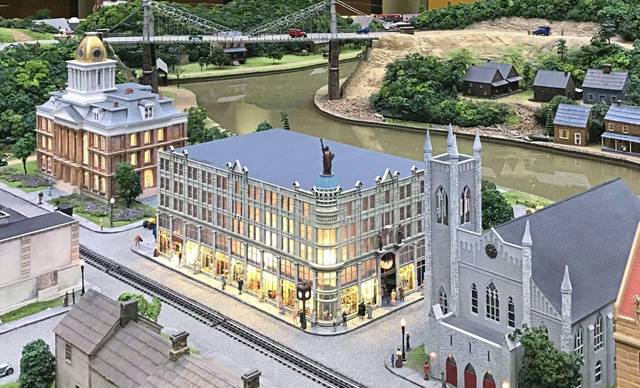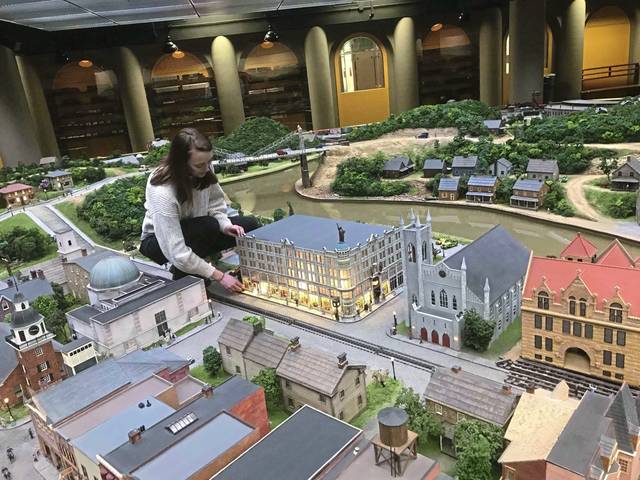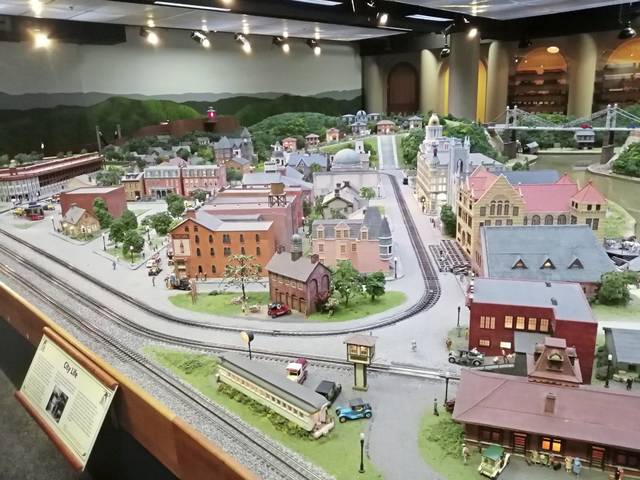Kaufmann's clock unveiled at Carnegie Science Center mini railroad exhibit
You won’t be able to meet under this Kaufmann’s clock.
But it can still conjure up memories of waiting for a date under the recognizable timepiece.
A replica of the department store, including the clock where people met for decades in Downtown Pittsburgh, is the latest piece to be installed at the Miniature Railroad & Village in the Carnegie Science Center.
Science center officials unveiled it Wednesday.
“That clock was the inspiration,because it is such an important part of Pittsburgh’s history,” said exhibit technician Andrew Spate. “People have met under the Kaufmann’s clock forever.”
Introducing the new addition to the Miniature Railroad & Village® for 2019: Kaufmann's Department Store, a replica of “The Grand Depot,” the original downtown mecca?️?? The Miniature Railroad reopens to the public tomorrow for its CENTENNIAL SEASON!? ? ? #pittsburgh pic.twitter.com/Ska422PnyE
— Carnegie Science Ctr (@CarnegieSciCtr) November 20, 2019
The piece was chosen as the exhibit celebrates 100 years, said Patty Everly, who has been curator of historic exhibits the past 28 years.
“Kaufmann’s has such a unique place in Pittsburgh history, culturally and historically,” Everly said. “It is so ingrained in Pittsburghers’ memories. We did a lot of research, some at the Heinz History Center and through that decided to include cherry wood ceilings, a Swarovski crystal chandelier and the recognizable windows.”
The windows were designed by Nikki Wilhelm, program assistant for the science center. She acquired furniture from doll house websites. Most came in pieces. She used tweezers to put them together. The windows contain a garden theme with flowers and a tea cart. She made hats from metal washers and included a tiny rocking chair and, of course, a train set. There are men’s and women’s fashions showcased as well as a cradle for a nursery-themed display.
The overall exhibit has more than 100 animations, 250,000 handmade trees, and joins replicas of Primanti Bros. in the Strip District, Forbes Field in Oakland, Donora’s Cement City, and Gobbler’s Knob in Punxsutawney. It was created by Charles Bowdish in 1919 and displayed at his home in Brookville. In 1954, the display moved to Buhl Planetarium and Institute of Popular Science before relocating to Carnegie Science Center in 1992.
JoAnne Klimovich Harrop is a TribLive reporter covering the region's diverse culinary scene and unique homes. She writes features about interesting people. The Edward R. Murrow award-winning journalist began her career as a sports reporter. She has been with the Trib for 26 years and is the author of "A Daughter's Promise." She can be reached at jharrop@triblive.com.
Remove the ads from your TribLIVE reading experience but still support the journalists who create the content with TribLIVE Ad-Free.




